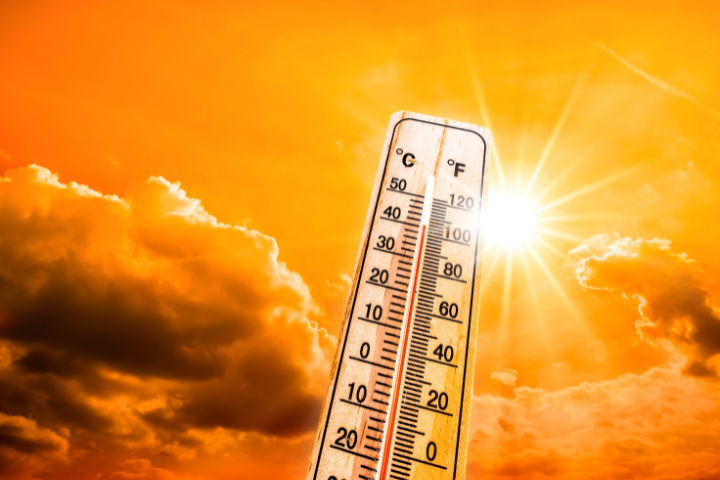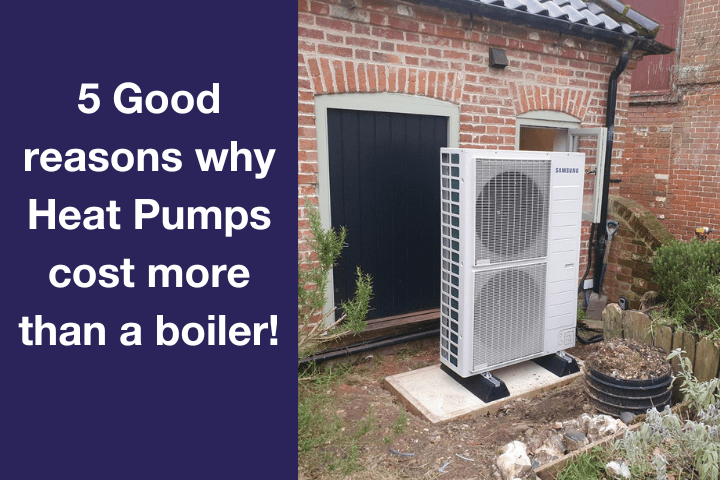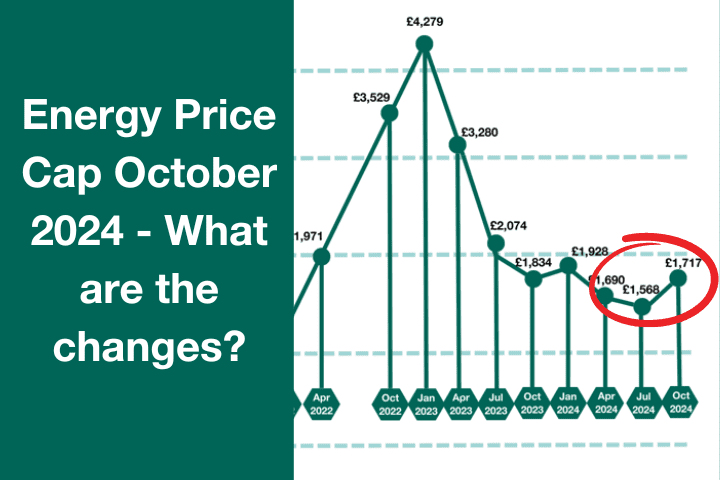Why solar energy is the perfect solution for surviving heatwaves and saving on energy bills

Ten things to know about solar PV when it’s hot and sunny in the UK
When the Beatles sang, “Here comes the sun, here comes the sun, and I say it’s alright,” they weren’t wrong. Everything feels better when the sun is shining.
In general, we, the British, as a nation, get a bit giddy in the sunshine. Barbeques are fired up; sausages are burnt. Paddling pool sales rocket; the kids trash our lawns. Cider suddenly becomes our drink of choice; we neglect the use of sun cream.
In the last week, the sun has been blazing. Weather presenters across the country’s local news have dared to whisper the word heatwave. It is easy to be flippant here in the UK when the sun shines and to get so distracted by our Fab and Twister ice lollies that we ignore the more severe and bigger picture of a heating planet due to climate change.
Last year, records were shattered in the UK for temperatures. The heatwave we feel now suggests another scorching summer could be on the cards again. The combined effects of climate change and the cyclical weather system El Nino, we are being told, threaten to make 2023 the hottest year on record. Since records began in the 19th century, the ten hottest years have all been in this century.
As a nation, we must start considering what hotter summers mean for our families and homes. And in particular, our relationship with the energy in our homes. Will we, for example, need to consider cooling our homes in summer? We don’t really do air-con in the UK in our homes, but is it something we must consider in the future? Of course, the irony of air-con systems is that during the summer, when needed most, they cause building energy consumption and prices to rise.
UK homeowners should consider the role solar energy and solar PV panels can play in their homes. Unsurprisingly, during heatwaves and periods of hot weather, we get a lot of enquiries about solar panels and battery storage. We also get a lot of questions about how solar works in hot weather. And disappointingly, we also hear the same old tired untruths and misinformation circulating about solar panels and how effective they are in the UK and the hot weather.
So, here it is
Our top ten things to know about solar in the UK (especially when it is hot and sunny)
Before we discuss how solar panels work when it is hot and sunny, let us talk about why the UK is already good for solar energy even without the heatwaves! (We make no apologies for our sunshine song-inspired pun titles!)
- Sunlight shining through the clouds.
We hear it all the time. The UK doesn’t get enough sun for solar energy. This is a common myth. While it is true the UK experiences its fair share of cloudy days, solar PV systems can still generate significant amounts of electricity and certainly enough to make considerable savings to your energy bills over the year.
Solar irradiance is the term that refers to the amount of sunlight that reaches the Earth’s surface. Despite the UK’s reputation for cloudy weather, it still receives considerable solar irradiance, especially during summer. Solar panels can harness a significant portion of the sun’s energy, even on cloudy days. Furthermore, the sun’s angle in the UK is more favourable during the summer, resulting in higher solar irradiance levels. This optimal positioning allows solar panels to capture more sunlight and generate more significant amounts of electricity.
Solar panels don’t solely rely on direct sunlight but can harness diffused light. Even on cloudy days, diffused sunlight penetrates the clouds, allowing solar panels to produce electricity. The UK receives a surprising amount of solar radiation, making it a viable location for solar energy generation.
- Those summer nights! (Tell me more, tell me more!)
During the summer solstice, typically around June 21st, the UK experiences its longest day of the year. This means more hours of daylight for solar panels to capture sunlight and convert it into electricity. With the sun rising early and setting late, solar panel systems have an extended period to generate renewable energy. The longer the days, the more time solar panels have to soak up the sun’s rays and produce clean power for homes and businesses.
The combination of extended daylight hours and higher solar irradiance translates into increased energy production for solar panel systems in the UK during the summer. More sunlight means more photons hitting the solar panels’ surface, leading to a higher solar energy conversion rate into electricity. This surplus energy can be utilised to power homes, charge electric vehicles, or even be fed back into the grid through net metering.
Net metering, a billing mechanism available in the UK, allows homeowners to sell excess electricity back to the grid. This means that even on cloudy days, the surplus electricity generated during the long summer days can offset energy consumption during less sunny periods, resulting in more significant cost savings. You, therefore, have plenty of power to charge the karaoke machine and sing along to John and Olivia.
- A pocketful of sunshine
The UK government’s Smart Export Guarantee (SEG), an example of net metering, ensures homeowners are paid for the excess electricity they export to the grid. This means on those long summer days when your solar panels generate more electricity than you need and can store, you are paid for the energy you generate back to the grid. So, you get a pocketful of sunshine towards your energy bills.
- Soak up the sun (with improving technology)
Advancements in solar panel technology have greatly improved the efficiency and performance of PV systems. Modern solar panels are designed to capture more sunlight and convert it into electricity, even in low-light conditions. Solar battery storage, like the Tesla Powerwall, has revolutionised solar energy for homeowners. They allow households to capture and store solar energy for their homes when needed. This means that UK homeowners can benefit from the latest innovations in solar technology, maximising energy production from their residential PV systems.
- The sunshine of our life
All life and energy come from the sun. So, why not harness this energy ourselves for our homes? Solar energy is a free, clean and renewable energy source that produces no greenhouse gas emissions during operation. By generating electricity from the sun, you can also significantly reduce your carbon footprint and contribute to the UK’s sustainability goals. Investing in solar power also helps diversify the energy mix, reducing our dependency on fossil fuels and promoting a greener future for the next generation.
What about solar panels in the UK during heatwaves and hot weather?
Once again, this week, we have seen misinformation being peddled by an elected official when DUP MP Sammy Wilson tweeted: “The UK has had to start coal fired generators during this heatwave because the sun is too strong and solar panels have had to be taken offline.” An untruth and the classic type of false narrative that confuses and misinforms. It is nonsensical to suggest that the UK is too hot for solar when countries like Australia, UAE and Saudi Arabia harness it successfully most of the year. Nevertheless, silly Sammy’s untruth about the solar power generated for the UK grid, debunked on the BBC website, is a common myth that we have heard filtering into people’s understanding of how efficient solar panels are on their homes when it is hot.
Here are five more things to know about solar panels when it is hot (no song lyrics this time, we’re afraid)
- Increased Efficiency Under Bright Sunlight
Solar panels thrive on sunlight; when the weather is warm and sunny, they work at their peak efficiency. The intense sunlight provides an abundant energy source, enabling the panels to generate more electricity. This means that your solar system will produce more clean, renewable energy, maximising your savings on energy bills and reducing your carbon footprint. So, embrace the sun and let your solar panels soak up those rays!
- Improved Grid Resilience
Higher temperatures and heatwaves can strain the power grid as the demand for electricity often increases. Solar panels with battery storage systems allow homeowners to be less reliant on the grid, which might be strained. Solar panels can ensure a continuous energy supply and enhanced resilience against heat-related grid failures.
- Regular Cleaning and Maintenance are Essential
While solar panels are built to withstand various weather conditions, the combination of hot temperatures and bright sunshine may lead to a buildup of dirt, dust, or other debris on the surface. Regular cleaning and maintenance are essential to ensure optimal performance. A simple rinse with water or a gentle wipe with a soft cloth can help remove obstructions and keep your panels operating at their best. Additionally, inspecting the panels for any signs of wear or damage is essential to address potential issues promptly. Always consult professionals to clean your solar panels if you think it is necessary.
- The Importance of Proper Ventilation
Solar panels rely on adequate airflow to prevent overheating. High temperatures can cause the panels to heat up, potentially reducing their efficiency. That’s why ensuring proper ventilation around your solar system is crucial. Make sure that there is sufficient clearance between the panels and the roof to allow air circulation. Consult with a professional installer to determine the ideal placement and design for your solar panels, considering the local climate conditions.
Proper installation is vital to ensuring the longevity and efficiency of your solar panel system, particularly in hot weather. When setting up the system, it is crucial to consider factors such as the panel’s orientation, tilt angle, and shading. Orientation refers to the direction the panels face, ideally south in the northern hemisphere or north in the southern hemisphere. The tilt angle determines how the panels are angled relative to the sun’s position. Correct orientation and tilt angles help maximise energy production and mitigate the impact of high temperatures. We pride ourselves on our installation at Green Building Renewables and support all our customers to understand what is best for their property.
- Safeguarding Against Extreme Heat
This is where the most common misunderstanding is that solar panels do not work when it is very hot.
Solar panels have a temperature coefficient that indicates how their performance is affected by changes in temperature. Typically, solar panels experience a slight reduction in efficiency as the temperature rises. Most panels are designed with this in mind and have a negative temperature coefficient. This means that the panel’s output decreases at a predictable rate as the temperature increases. It is crucial to understand your panel’s temperature coefficient and how it may impact its performance during hot weather conditions.
High temperatures can cause the electrical components of solar panels to heat up, potentially decreasing their efficiency. To combat this, most modern solar panel designs incorporate heat dissipation mechanisms. These mechanisms help dissipate excess heat and keep the panels operating within an optimal temperature range. Additionally, some installations use technologies like air gaps or passive cooling techniques, like water cooling, to enhance the panel’s cooling capacity, but this is only needed in the hottest locations. The UK does not have enough consecutively sweltering days to justify such systems. A good professional installer will ensure your solar panel system is adequately designed for heat dissipation in your specific climate.
Just like your mobile phone or laptop, excessive heat can impact the lifespan of the electronic components in the solar panels. However, manufacturers rigorously test their products to withstand extreme conditions. By choosing reputable solar panel brands and working with certified installers, like Green Building Renewables, you can ensure that your solar system is equipped to handle the heat and keep powering your home for years.
So, when the sun beats down, and the thermometer rises, solar panels should be allowed to revel in the glory of the sun’s rays. They thrive in hot and sunny weather, converting the sun’s rays into clean, renewable energy. So why not embrace the power of solar and take advantage of the summer heat and future summers to maximise the benefits a solar panel system can bring to your home?
Solar Arrays in the Hottest Countries: Embracing the Sun’s Power in Extreme Heat
The suggestion that the UK is too hot for solar energy by any politician or person is laughable, especially when considering how the hottest countries in the world are already harnessing the sun’s abundant energy to generate power.
Hot countries worldwide are blessed with intense heat and near-constant sunshine, making them perfect candidates for large-scale solar array systems. Here are five places from across the globe, much hotter than the UK, already embracing solar energy to generate power.
- United Arab Emirates (UAE)
Nestled in the heart of the Arabian Peninsula, the United Arab Emirates is renowned for its soaring temperatures and desert landscapes. In recent years, the UAE has emerged as a global leader in solar energy, spearheaded by projects like the Mohammed bin Rashid Al Maktoum Solar Park. Located in Dubai, this colossal solar park aims to reach a capacity of 5,000 megawatts by 2030, making it the largest single-site solar park in the world. The UAE’s commitment to solar energy reduces its carbon footprint and diversifies its energy portfolio.
- Saudi Arabia
As one of the sunniest countries in the world, it is no surprise that Saudi Arabia is actively investing in solar power. The country has set ambitious goals to generate a significant portion of its energy from renewable sources, with a particular focus on solar. The Sakaka Solar Power Plant, one of the world’s most significant utility-scale solar projects, produces clean energy for thousands of homes.
- Australia
Known for its vast deserts and scorching summers, Australia is a prime location for solar arrays. The country has witnessed a significant boom in solar energy installations in recent years. It boasts some of the world’s largest solar farms, such as the Solar River Project and the Sunraysia Solar Farm. These projects showcase Australia’s dedication to renewable energy and its potential to become a global solar energy leader. Despite the challenges of extreme heat and bushfires, Australia’s solar arrays continue to thrive and contribute to the country’s clean energy transition.
- Morocco
Morocco is another hot country that has embraced solar power to address its energy needs. The Noor Solar Power Complex, situated near the city of Ouarzazate, is an impressive example of Morocco’s commitment to renewable energy. This vast complex, consisting of several phases, aims to provide clean energy to millions of people while reducing dependence on fossil fuels. Morocco’s solar arrays capitalise on the country’s abundant sunlight and help create jobs and stimulate economic growth.
- India
India is a hotspot for developing solar power with its diverse climate and extreme summer temperatures. The country has made substantial progress in expanding its solar capacity and has set ambitious targets to increase its renewable energy share. India’s solar arrays, like the Kamuthi Solar Power Project, demonstrate its commitment to sustainable development and addressing energy access challenges. By harnessing the sun’s power, India aims to meet its growing energy demands while reducing greenhouse gas emissions.
Deploying solar arrays in the hottest countries comes with unique challenges. These include extreme temperatures, dust accumulation, and the need for efficient cooling systems. However, technological advancements and innovative solutions, such as anti-reflective coatings, solar tracking systems, and dust-resistant panels, are being employed to optimise solar performance in these environments. Such technological advancements will, in turn, benefit other countries, even the UK, if they, too, need to begin installing solar arrays to need to contend with extreme heat. However, we don’t need to worry about solar energy not working in the UK. So, for now, when it comes to solar energy in the UK, to paraphrase the Beatles (kind of), it is a case of “here comes the sun, here comes the savings!”




